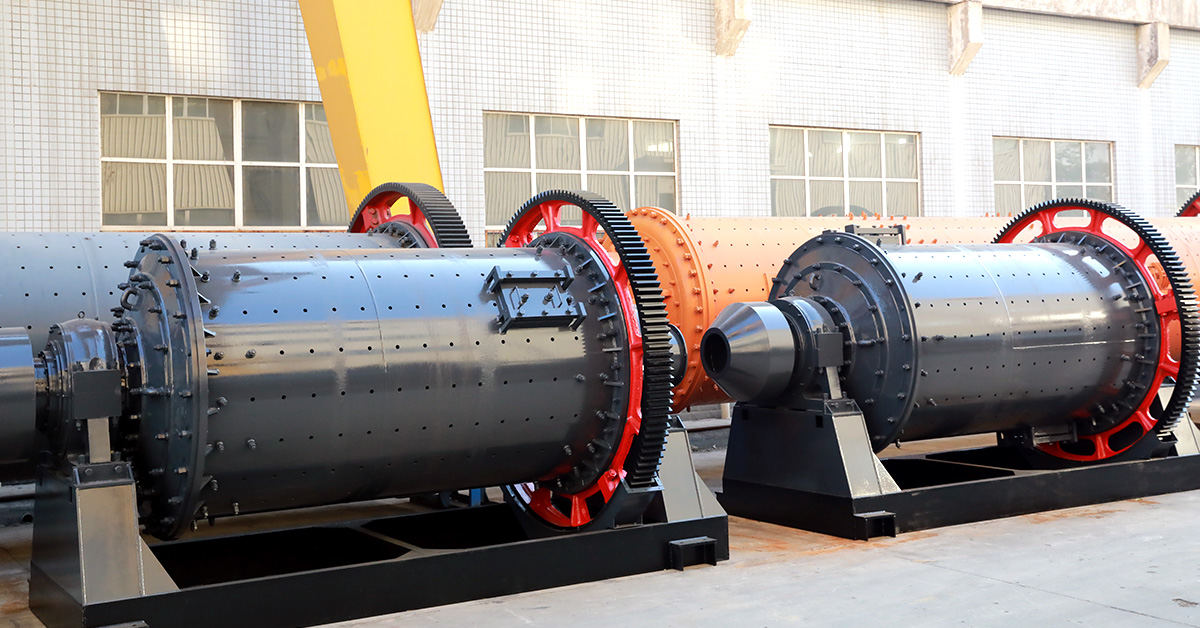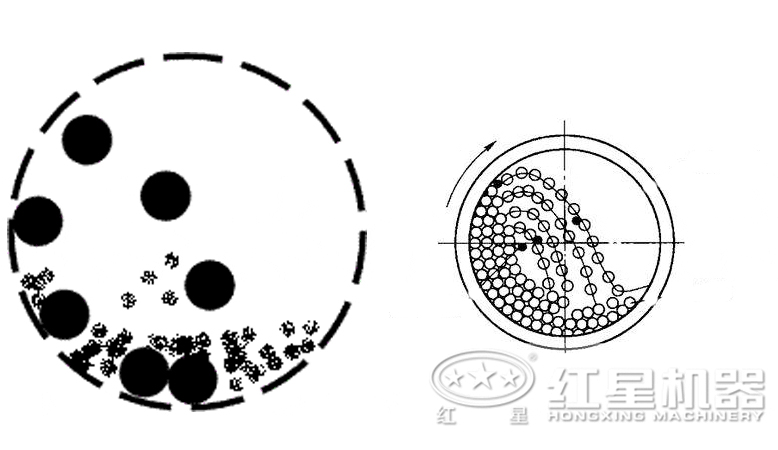
Industrial ball mills use horizontally rotating cylinders. The length of the cylindrical shell of the ball mill is usually 1 to 1.5 times the diameter of the shell. The ball mill is a medium-fine grinding equipment that reduces the size of the material through grinding. In a tumbling drum filled with 40% to 50% of the balls, the material to be ground fills the gaps between the balls.

The cylinder contains grinding media and materials to be ground. When the gravity rotates, the material moves upward along the cylinder wall. When the gravity exceeds the friction and centrifugal force, the material falls into the bottom of the ball mill. When falling into the collision between the grinding medium and the wall of the ball mill, the material will be broken at the bottom of the mill. In the ball mill, when the material falls from the rotating shell, the grinding medium and the material acquire potential energy, which becomes kinetic energy.

Generally, the ball mill can be operated wet or dry material and can produce finished products of different sizes. The material can be dry material and the moisture content is less than 3% to minimize the coverage of the ball by the material, or a slurry with a water content of 20% to 40% can be used.
The ball mill can be used for primary or secondary grinding applications. In primary applications, they receive material from a crusher, and in secondary applications, they receive material from a rod mill or crusher. The regrind in mineral processing operations is usually a ball mill because the material for these applications is usually very fine. Sometimes ball mills are used for single-stage grinding to receive material from a crusher. The circuits of these ball mills are often closed with a classifier under high cyclic loads.
 Previous Post:
Common Problems and Solutions of Raymond Mill
Previous Post:
Common Problems and Solutions of Raymond Mill
 Next Post:
How Is Gold Processed
Next Post:
How Is Gold Processed
Please fill in the form below or inquiry online to get price & service
 Chat Online
Chat Online
 Get Quote
Get Quote